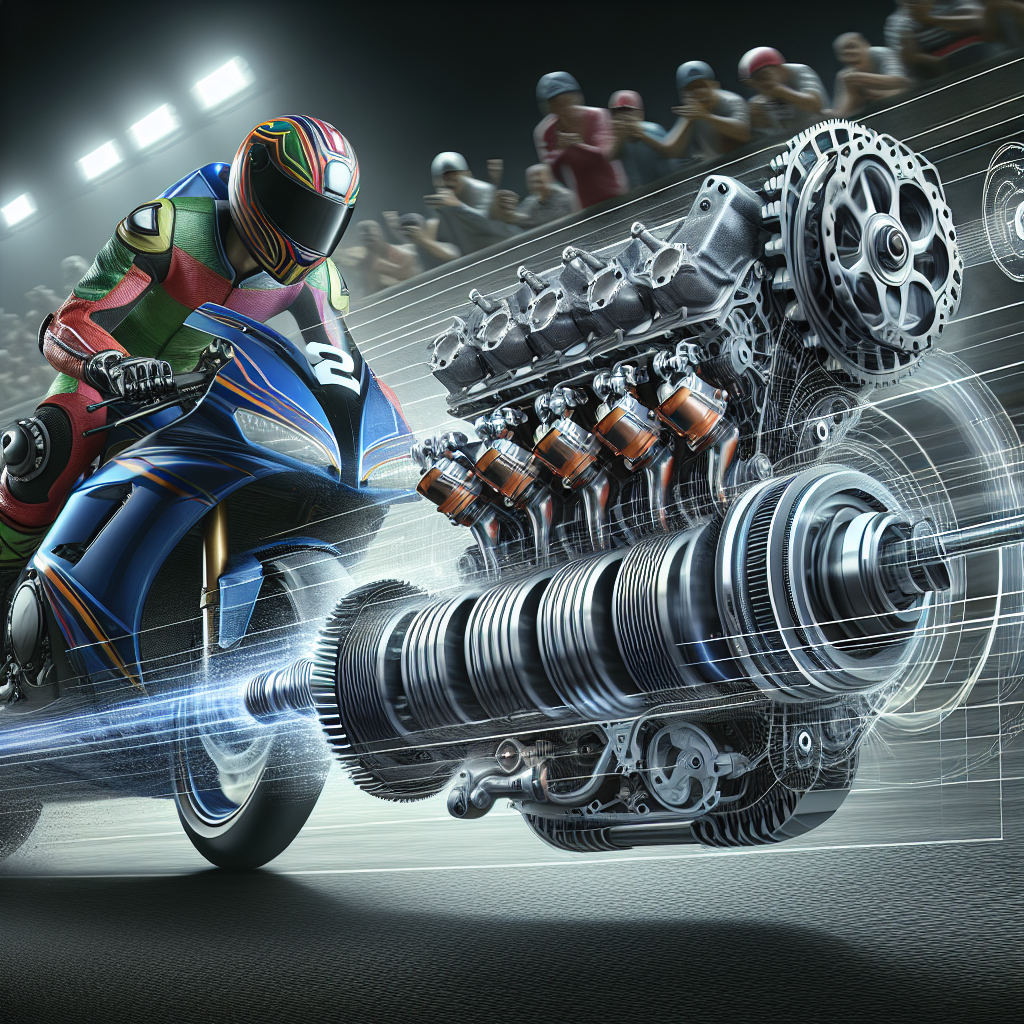-
Table of Contents
Introduction

Motorcycle racing is a popular sport in Indonesia, attracting millions of fans and participants. One crucial aspect of motorcycle racing is the performance of the engine and its impact on the overall race. In this article, we will explore the various factors that affect engine performance in motorcycle racing and the consequences they have on the outcome of races.
The Importance of Engine Performance
The performance of a motorcycle engine plays a vital role in determining the success of a racer. A powerful and efficient engine can provide the necessary speed and acceleration required to outperform competitors on the track. It is the heart of a racing motorcycle and can make or break a racer’s chances of victory.
1. Engine Displacement
Engine displacement refers to the total volume of all the cylinders in an engine. It is usually measured in cubic centimeters (cc) and is a crucial factor in determining the power output of a motorcycle engine. In motorcycle racing, engines with larger displacements tend to have more power and torque, allowing racers to achieve higher speeds and faster acceleration.
However, it is important to note that engine displacement alone does not guarantee superior performance. Other factors such as engine design, fuel delivery system, and overall weight of the motorcycle also play significant roles in determining the engine’s performance.
2. Engine Compression Ratio
The compression ratio of an engine is the ratio of the volume of the combustion chamber at its largest to the volume at its smallest. It is a critical factor in determining the engine’s efficiency and power output. A higher compression ratio generally leads to better performance, as it allows for more efficient combustion of the fuel-air mixture.
However, increasing the compression ratio also increases the risk of engine knocking, which can cause severe damage to the engine. Therefore, finding the right balance between performance and reliability is crucial for motorcycle racers.
3. Fuel and Air Mixture
The fuel and air mixture in the engine’s combustion chamber significantly affects its performance. The ideal mixture for maximum power output is known as the stoichiometric ratio, which is typically around 14.7 parts of air to 1 part of fuel. However, in motorcycle racing, racers often adjust the fuel and air mixture to achieve optimal performance for specific track conditions.
Racers may use different fuel types, such as high-octane racing fuel, to enhance engine performance. Additionally, modifications to the fuel delivery system, such as installing performance carburetors or fuel injection systems, can further optimize the fuel and air mixture for maximum power output.
4. Engine Cooling
Engine cooling is crucial in motorcycle racing, as high-performance engines generate a significant amount of heat. Overheating can lead to a loss of power and potential engine damage. Therefore, effective cooling systems are essential to maintain optimal engine performance throughout a race.
Motorcycle racers often use liquid cooling systems, which circulate coolant through the engine to dissipate heat. These systems are more efficient than air cooling systems and allow racers to push their engines to the limit without the risk of overheating.
The Impact of Engine Performance on Racing
The performance of a motorcycle engine has a direct impact on the outcome of races. A well-tuned and powerful engine can provide racers with a competitive edge, allowing them to achieve higher speeds, faster acceleration, and better lap times. On the other hand, a poorly performing engine can hinder a racer’s chances of success.
1. Acceleration and Top Speed
A powerful engine with high torque and horsepower enables racers to accelerate quickly and reach higher top speeds. This is particularly important during overtaking maneuvers and straight-line sections of the track. A faster acceleration and higher top speed can give racers a significant advantage over their competitors, allowing them to gain positions and maintain a competitive edge.
2. Cornering Ability
Engine performance also affects a motorcycle’s ability to navigate corners effectively. A well-performing engine provides racers with the necessary power and torque to maintain speed through corners and accelerate out of them. This allows racers to carry more speed through corners, reducing lap times and increasing their chances of success.
3. Reliability
In addition to performance, engine reliability is crucial in motorcycle racing. A reliable engine ensures that racers can complete races without experiencing mechanical failures or breakdowns. Regular maintenance, proper tuning, and using high-quality components are essential to ensure the engine’s reliability.
Conclusion
In motorcycle racing, engine performance is a critical factor that can determine the success or failure of a racer. Factors such as engine displacement, compression ratio, fuel and air mixture, and engine cooling all play significant roles in determining the engine’s performance. A well-tuned and powerful engine can provide racers with a competitive edge, enabling them to achieve higher speeds, faster acceleration, and better lap times. Understanding and optimizing engine performance is essential for motorcycle racers who aspire to excel in this thrilling sport.





